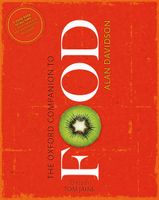Advertisement
Philippines
Published 2014
Philippine cookery draws from definite and visible roots set in history. The Malay matrix goes deepest, and from it come dishes with native names (laing, sinigang) quite similar to those in other SE Asian cuisines. The Chinese influence, brought by traders from about the 11th century, is responsible for pansit (see noodles of Asia), lumpia, and other dishes also found elsewhere in SE Asia in a similar process of acculturation. The Spanish colonial regime brought with it as well Mexican inputs like tamales (since the islands were under the administration of the vice-royalty of Mexico), and the dishes now enshrined as fiesta food (paella, morcon), and a name that came to be attached to a native dish: adobo. The American influence is chiefly felt in convenience and fast foods, such as sandwiches and salads, hamburgers and pizza. There are also strands of Indian and Arab influences, especially among the Muslim peoples of Mindanao.


